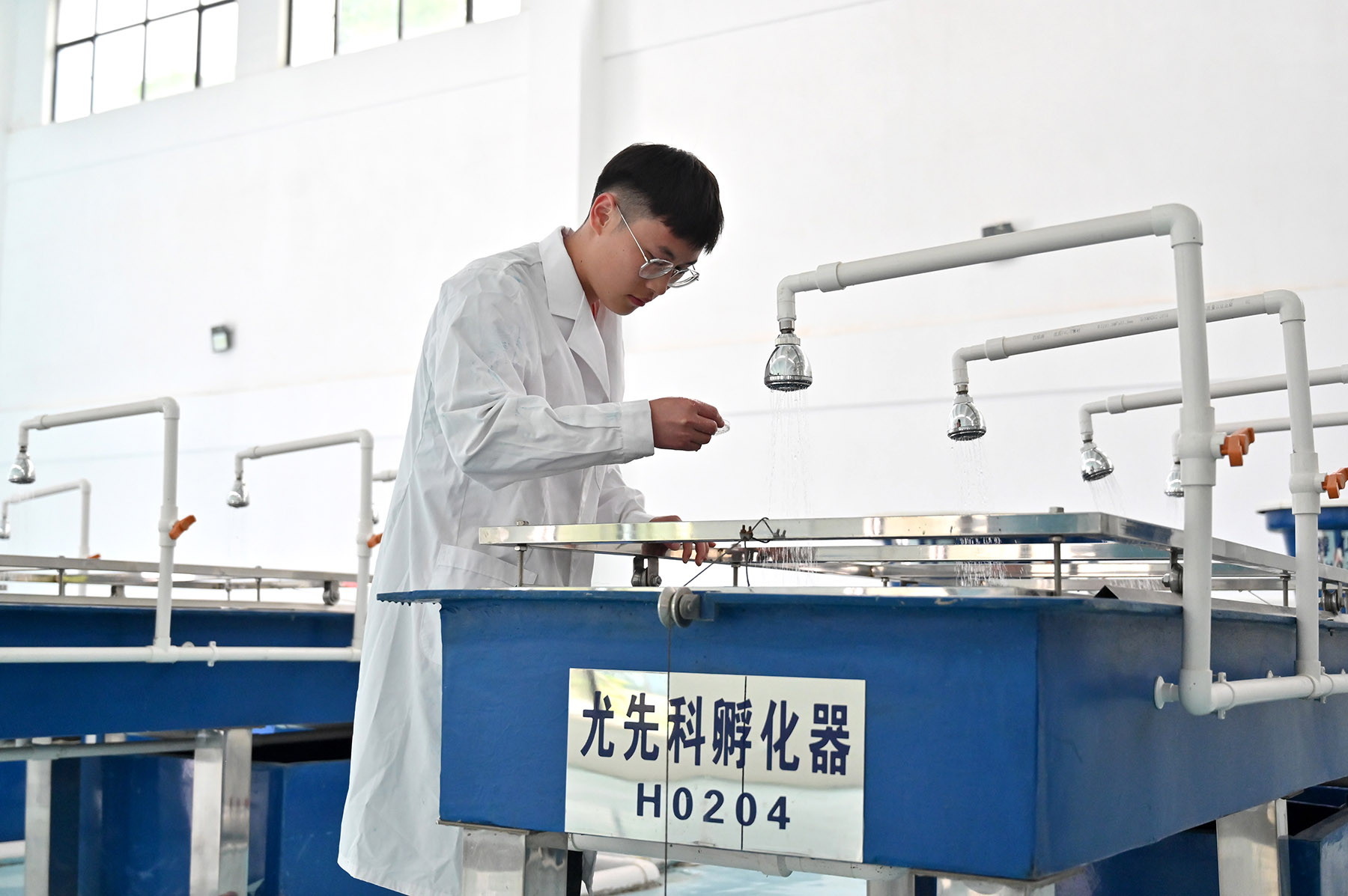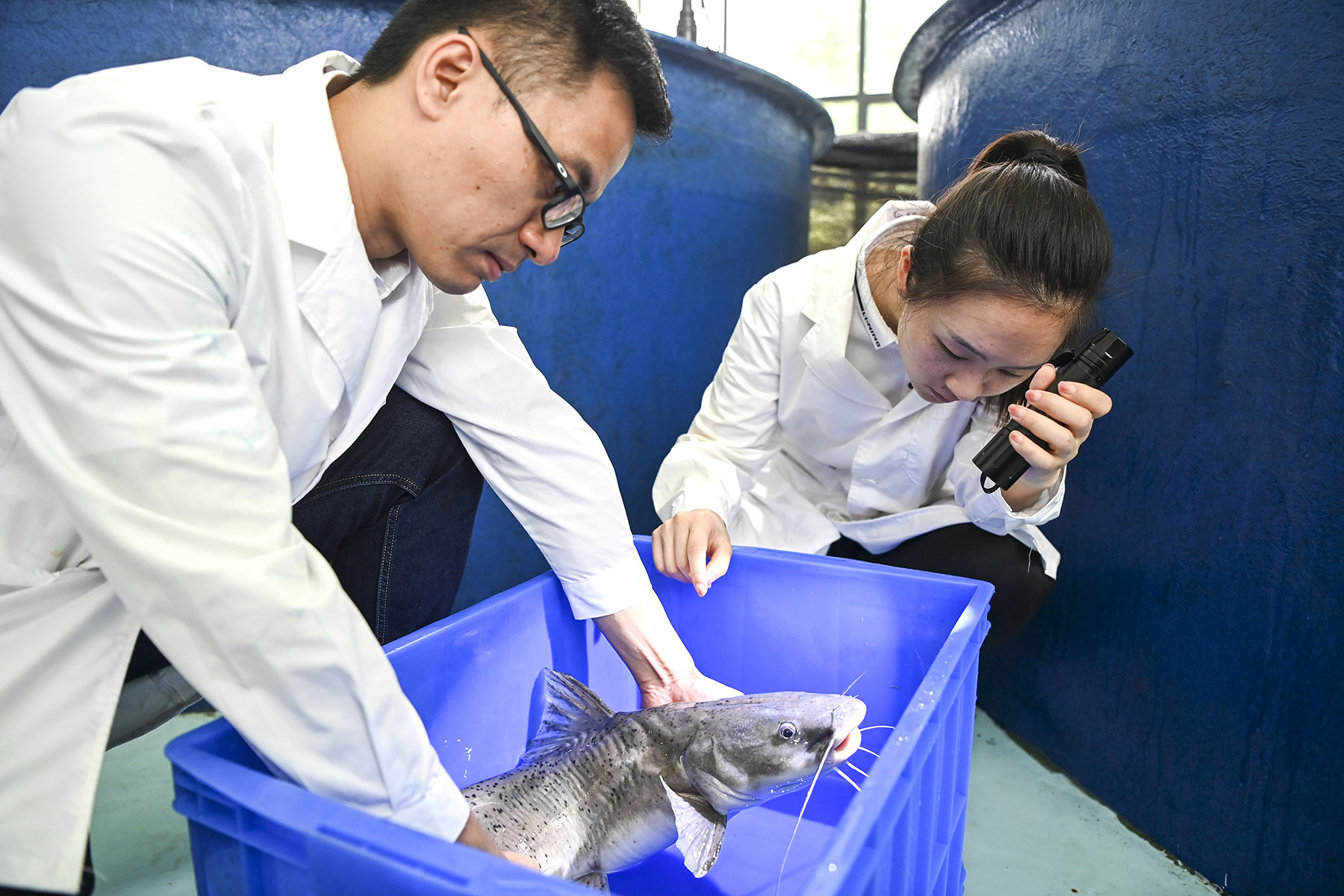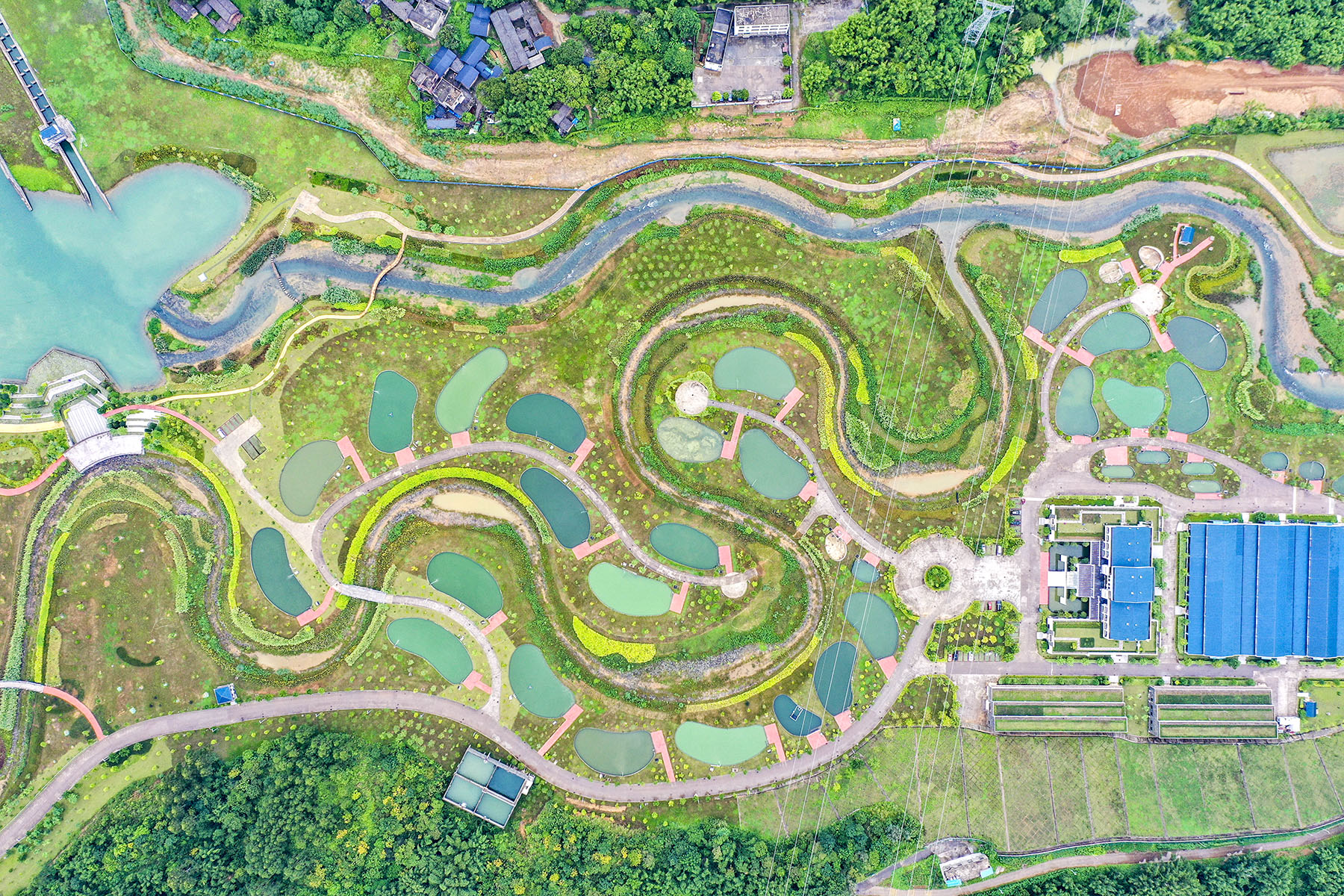Spinoff of Datengxia hydropower facility ensures against negative environmental impacts on rare species

Editor's note: As protection of the planet's flora, fauna and resources becomes increasingly important, China Daily is publishing a series of stories to illustrate the country's commitment to safeguarding the natural world.
Zhang Jiajun, the assistant director of the Hongshui River Conservation Center for Rare Fish, is embracing his busiest time of the year.
Split into two shifts, he and his six-member team have to live in their office from March to July.
"We are especially busy in April and May. For several months, I am barely home for more than three days," the 33-year-old said.
The Hongshui is a major river in South China's Guangxi Zhuang autonomous region and a main tributary to the Pearl River. After joining the Liujiang River in Guangxi, it is called the Qianjiang River, which powers the 1.6-gigawatt Datengxia Gorge Water Conservancy Hydropower Project in Guiping, Guangxi, that came online last year.
For Zhang, the busiest season means that he has to make sure the rare fish conservation center's stocks of fish fry are regularly fed in order for them to be ready for release back into their natural habitat.
READ MORE: Species beginning to recover in Yangtze
The fish have to be fed every two to three hours, and it is intense work, with Zhang claiming it's the reason for his thinning hair.
Stretching 660 kilometers, the Hongshui spans Guizhou province and Guangxi, but as it is located in the Pearl River Basin it falls under the jurisdiction of the Pearl River Water Resources Commission.
With the hydropower project creating tangible changes to the river ecosystem, the center, established in March last year, is focused on ensuring that the ecosystem not only survives but prospers in its new form.
The center is part of a series of measures introduced along with the hydropower project to protect the existing ecosystem.
Other measures include two enormous "fish ladders". They are a series of artificial structures — for example, connected artificial lakes and ponds that, depending on the flow of the water, allow fish to navigate the dammed sections of the river either upstream or downstream. In addition to the "ladders", there are also two fish stocking stations, four floating artificial fish habitats and one artificial spawning ground.

Altogether, the scale of the system outpaces similar ecosystem-protecting efforts in any other water conservancy projects, according to Guangxi Datengxia Gorge Water Conservancy Development Co, the project's builder and operator.
"While enhancing the management of water resources and the control of water-related disasters to benefit mankind, the construction of the Datengxia project has also fully considered the overall natural environment and the reproduction and thriving of aquatic organisms such as fish," said Deng Xunfa, chairman of the Datengxia company.
He said the company chose to not follow a proposal to build a high dam for the project, considering that such a dam would have had a significant adverse impact on the area's natural environment.
Launched in 2014, the project is a crucial part of the country's water network to control floods, facilitate shipping, generate electricity, provide irrigation and enhance the water supply. Its main structure was completed in September.
The Datengxia Reservoir has significantly enhanced the flood control capability of the city of Wuzhou, an industrial hub in Guangxi. After flowing past Datengxia, the Qianjiang joins the Yujiang River in urban Guiping, becomes the Xunjiang River, runs for more than 150 kilometers and passes through Wuzhou.
The joint operation of the Datengxia Reservoir and other reservoirs upstream will enable the city with a population of over 2.8 million to withstand once-in-100-year floods. Previously, Wuzhou was only capable of coping with a once-in-50-year deluge.
Thanks to the project, the Qianjiang can accommodate ships of up to 3,000 metric tons, compared with only 300 tons before the project was completed, the company said.
Aside from addressing the threat of drought for 80,400 hectares of farmland, and water shortage for almost 1.4 million people, the project can generate more than 6 billion kilowatt-hours of electricity annually, which is equivalent to negating the use of 2 million tons of standard coal, reducing emissions of carbon dioxide by 5 million tons.
Because of the Datengxia project's huge store of water, it can release freshwater at a greater speed to combat saltwater intrusion in the Pearl River estuary, which threatens the water supply in the Guangdong-Hong Kong-Macao Greater Bay Area. The time it takes to divert the water for this task has been reduced from seven to 10 days, to only two to three days.
According to Zhang, the construction of the Hongshui center was entirely funded by the Datengxia company. Its operating costs are covered by all 10 of the cascade hydropower plants along the Hongshui-Qianjiang, of which the Datengxia project is the farthest downstream, as well as the Changzhou hydropower station just a dozen kilometers upstream of urban Wuzhou.

The center is the country's first institute for aquatic ecology protection established by the government, participated in by enterprises, funded by stakeholder businesses and managed by a commission.
"The center is a pioneer in the country in regard to its management concept and operation," he said.
The 11 hydropower plants provide 17 million yuan ($2.4 million) annually to the center, which has 20 permanent employees and is also supported by at least 10 workers from third-party service providers, he said.
Aside from its breeding department, the center also has teams dedicated to monitoring and conserving the river's biological resources.
"In its short history, the center has already made some progress in biodiversity conservation," Zhang said.
He said, to date, the center has collected about 4,600 fish of rare species for protection, including spotted longbarbel catfish and white cloud mountain minnow, both of which are under second-class State protection, and Acrossocheilus iridescens longipinnis, a species of cyprinid fish.
Breakthroughs have been made in breeding white cloud mountain minnow and Acrossocheilus iridescens longipinnis, with 200 and 10,500 hatched, respectively, he said.
"We screen for species under threat first and then make them priorities of our breeding efforts," he said.
While the breeding technologies the center develops will be shared with its member institutions, Zhang said the fish fry it cultivates will be freed into natural water bodies.
The efforts aim to enrich populations of fish species and enhance fish biological diversity in the river basin, he said.
For the species that are endangered and with a very limited population, the center will keep some live fish and also freeze their germ cells, he noted.
"With these cells, there remains a possibility to recover the population of these species in the future, though that is not possible in the short term with current technologies," he said.

Fish ladders
A team of over 20 has been hard at work since February, monitoring Datengxia's two giant fish ladders to make sure that fish are migrating through them smoothly.
For nine months, the monitoring is being conducted weekly in six different ways, including implanting tracking tags, catching and releasing fish sample sets and video monitoring.
"In the case of big variations in water levels and flows, the monitoring will be further intensified," said Zhou Jiawei, deputy head of the Datengxia company's monitoring department, adding that the efforts aim to figure out how these variations will affect the operation of the fish ladders.
According to Zhou, since the monitoring started about three years ago on the fish ladder that runs through the project's auxiliary dam, 66 species of fish have been recorded.
While it's hard to get an annual total, monitors have found an increase in the number of fish that manage to go through the ladder on an annual basis, he noted.
Stretching for 5.4 km, the fish ladder on the auxiliary dam is the country's longest fish ladder that mimics the natural watercourse, according to the Datengxia company.
Dotted with artificial lakes and wetlands, the fish ladder has a lot of twists and turns with a large degree of variability in depth. It has two lanes, with one specifically designed for the flood season.
The velocity of water in the fish ladder, which can range from 0.35 to 1.2 cubic meters per second, and its depth are set based on the characteristics of the main species of fish in the river section and tests the company conducted on the swimming capabilities of these species.
Zhou said the monitoring on the fish ladder of the main dam, which began in September, has so far recorded 30 fish species.
Huang Jun, chief engineer at the Datengxia company, said it lowers the water levels in the reservoir each year from April to September to create favorable conditions for fish to spawn upstream.
ALSO READ: Yangtze protector works to replenish stocks of rare fish
Fish that lay drifting eggs usually spawn from June to July. Aside from ensuring the spawning grounds of such fish are not inundated, low water levels in the reservoir help create the hydrologic conditions suitable for them to spawn, he said.
Li Guoliang, head of operations management at the Datengxia company's fish conservation center, said the company has released 12 million fish fry of 13 species, many of which are bred by the company itself, into natural water courses 18 times since 2020.
The company has so far bred 15 species of fish, which cover most representative species in the river basin, he noted.
The breeding and releasing operation has effectively enriched fish resources in the basin in terms of both quantity and variety, Li said.
"According to our monitoring in the past three years, 66 species of fish have managed to pass through the fish ladders, and a gradual increase in variety has been observed. This has to some extent demonstrated that our efforts to breed and release fish and enhance fish conservation have yielded progress," he said.
Contact the writers at houliqiang@chinadaily.com.cn


